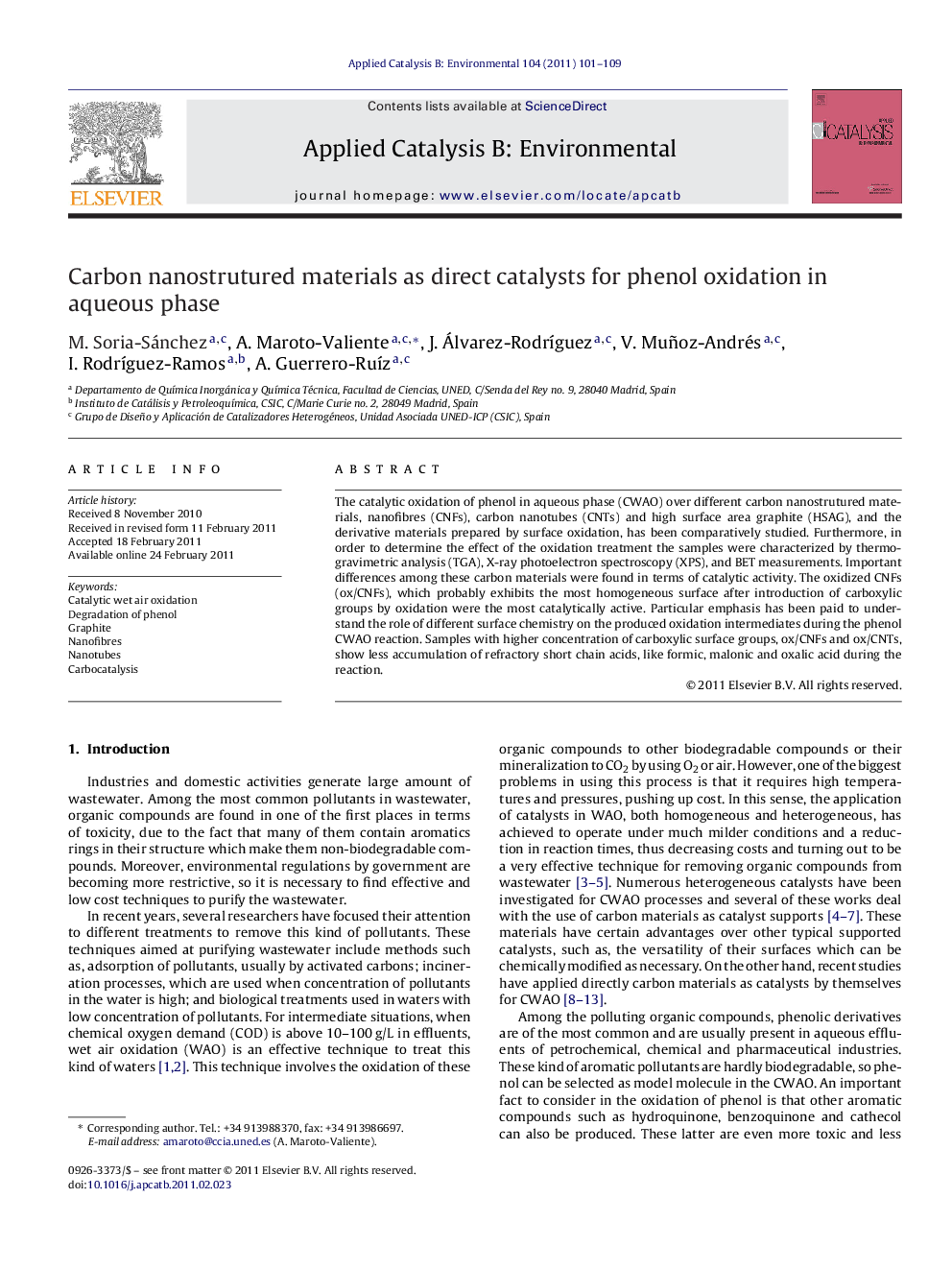| Article ID | Journal | Published Year | Pages | File Type |
|---|---|---|---|---|
| 46833 | Applied Catalysis B: Environmental | 2011 | 9 Pages |
The catalytic oxidation of phenol in aqueous phase (CWAO) over different carbon nanostrutured materials, nanofibres (CNFs), carbon nanotubes (CNTs) and high surface area graphite (HSAG), and the derivative materials prepared by surface oxidation, has been comparatively studied. Furthermore, in order to determine the effect of the oxidation treatment the samples were characterized by thermogravimetric analysis (TGA), X-ray photoelectron spectroscopy (XPS), and BET measurements. Important differences among these carbon materials were found in terms of catalytic activity. The oxidized CNFs (ox/CNFs), which probably exhibits the most homogeneous surface after introduction of carboxylic groups by oxidation were the most catalytically active. Particular emphasis has been paid to understand the role of different surface chemistry on the produced oxidation intermediates during the phenol CWAO reaction. Samples with higher concentration of carboxylic surface groups, ox/CNFs and ox/CNTs, show less accumulation of refractory short chain acids, like formic, malonic and oxalic acid during the reaction.
Graphical abstractFigure optionsDownload full-size imageDownload as PowerPoint slideHighlights► The oxidation treatment with HNO3 of the CNFs gives place to a homogeneous incorporation of oxygen groups. ► The oxidation treatment of HSAG material does not have any significant effect on its catalytic activity. ► The higher relative concentration of COOH functional groups originates an improved elimination of short chain carboxylic acids from the reaction mixture.
